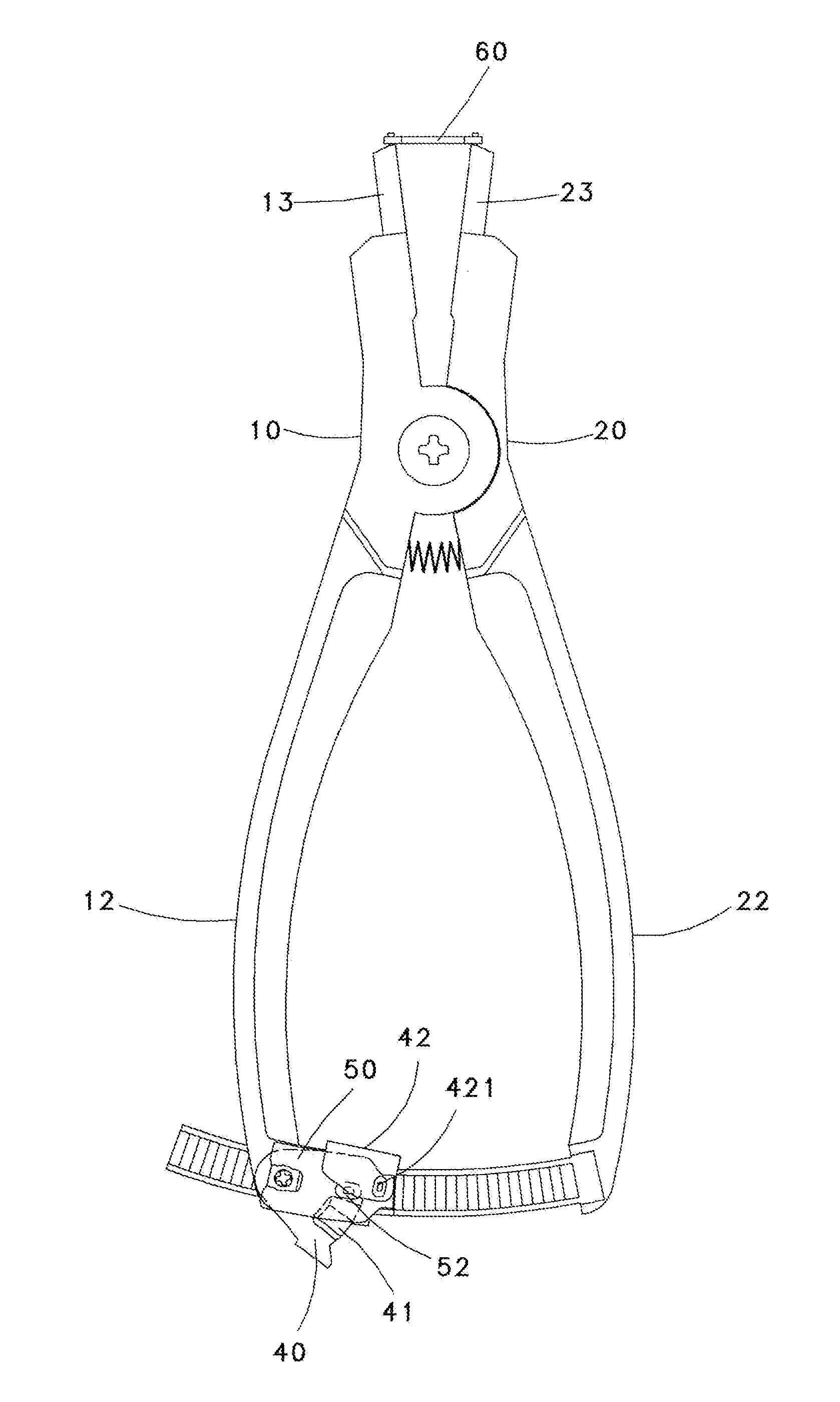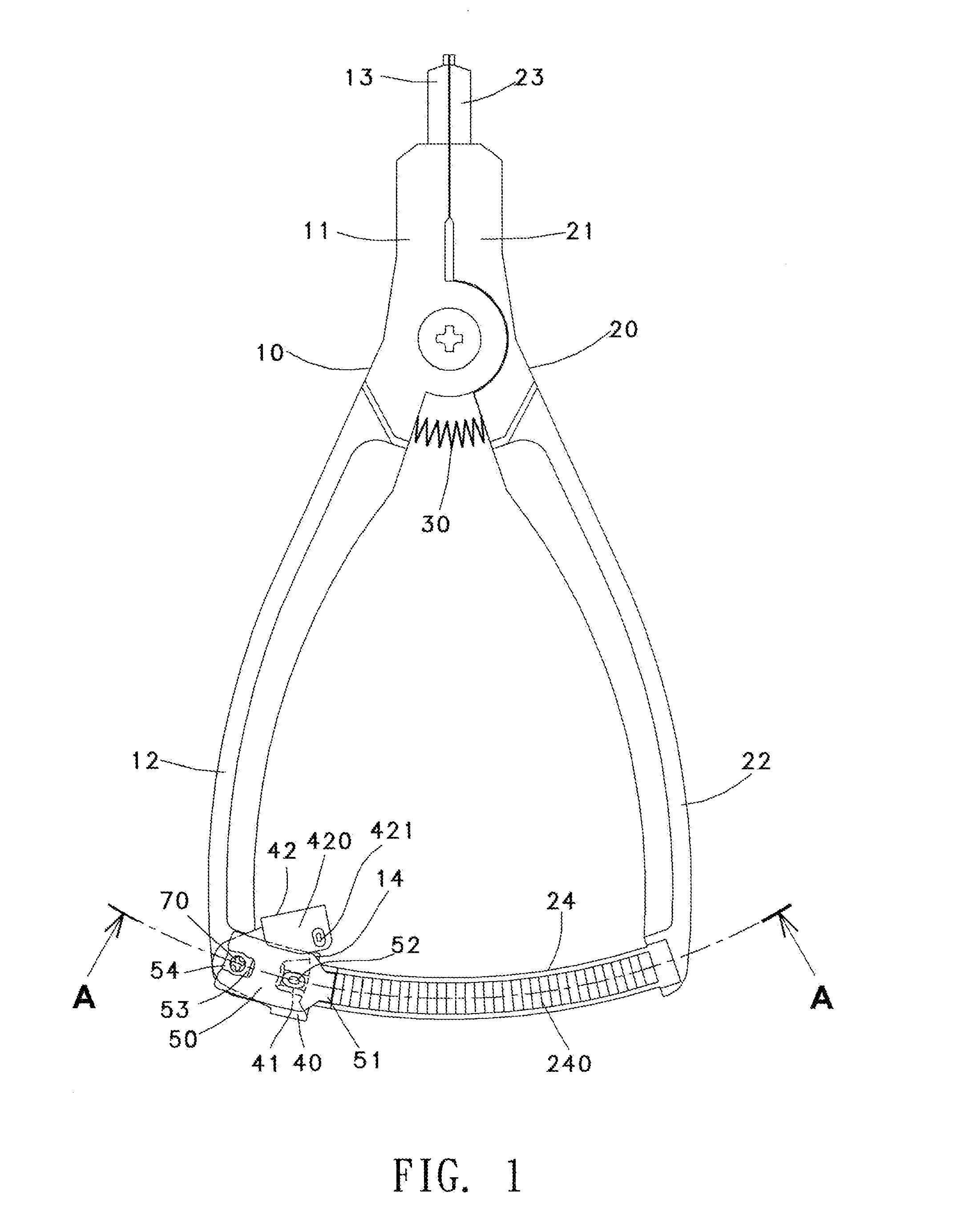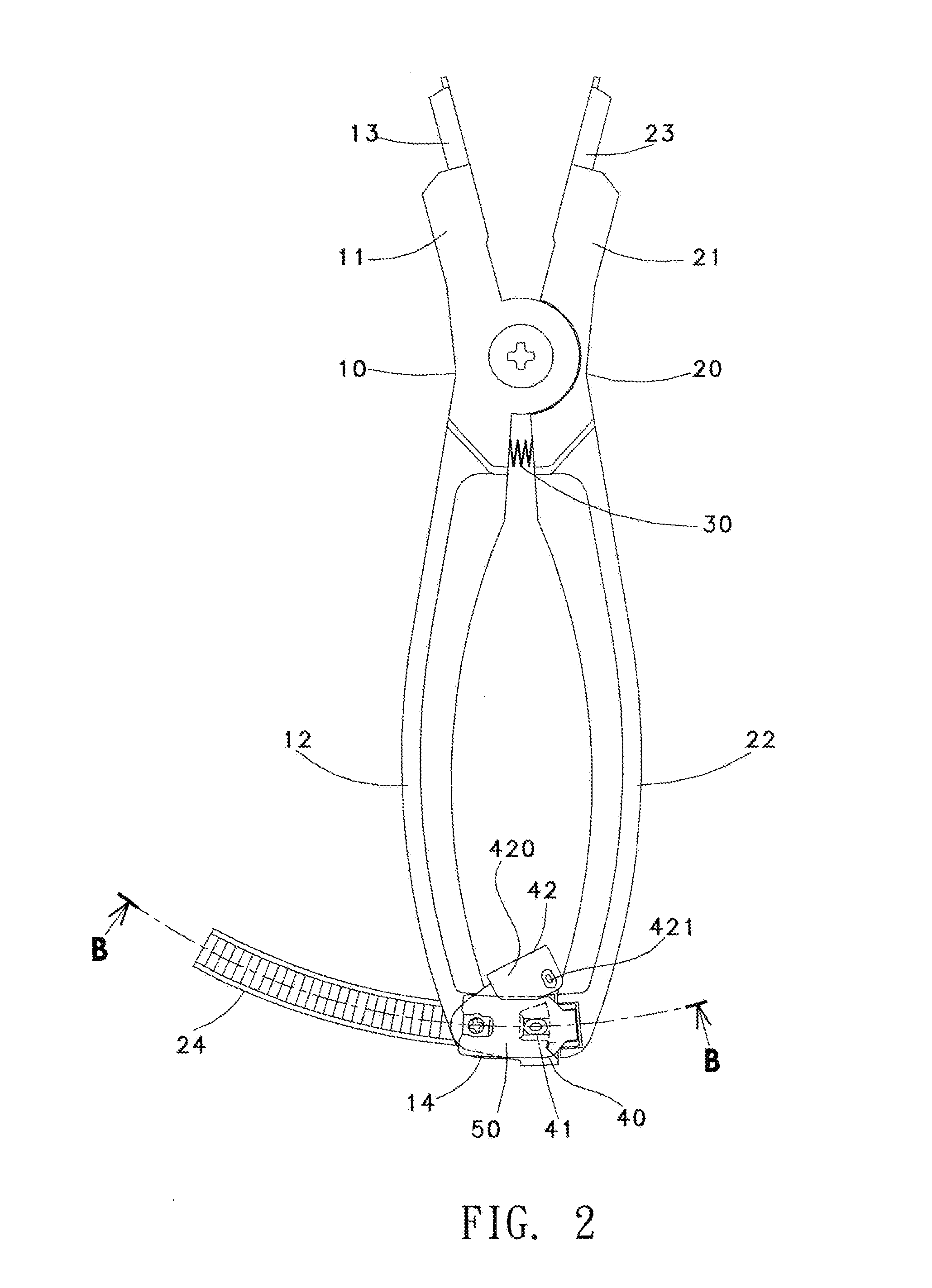Snap ring pliers
a technology of snap ring pliers and pliers, which is applied in the direction of pliers, metal-working hand tools, metal-working apparatus, etc., can solve the problems of snap ring to fly, snap ring to fall, and individual holding snap ring pliers to hit and hurt, so as to reduce the bent angle, stop exerting force, and the effect of less resistan
- Summary
- Abstract
- Description
- Claims
- Application Information
AI Technical Summary
Benefits of technology
Problems solved by technology
Method used
Image
Examples
Embodiment Construction
[0026]Referring to FIGS. 1 to 14, the snap ring pliers in accordance with a first preferred embodiment of the invention comprises the following components as discussed in detail below.
[0027]A pair of first and second levers 10, 20 is pivotally secured together at a fulcrum. The first lever 10 comprises a first jaw 11 and a first handle 12. The second lever 20 comprises a second jaw 21 and a second handle 22. A first gripping member 13 is projected out of an open end of the first jaw 11. A second gripping member 23 is projected out of an open end of the second jaw 21. A torsion spring 30 is provided between the first and second handles 12, 22 adjacent to the fulcrum. The first and second handles 12, 22 are operated to open or close the first and second gripping members 13, 23 by means of the torsion spring 30.
[0028]A curved ratchet rack 24 has one end fixedly secured to an open end of the second handle 22 and the other end disposed proximate to an open end of the first handle 12. A s...
PUM
| Property | Measurement | Unit |
|---|---|---|
| flexible | aaaaa | aaaaa |
| elasticity | aaaaa | aaaaa |
| stored elastic energy | aaaaa | aaaaa |
Abstract
Description
Claims
Application Information
 Login to View More
Login to View More - R&D
- Intellectual Property
- Life Sciences
- Materials
- Tech Scout
- Unparalleled Data Quality
- Higher Quality Content
- 60% Fewer Hallucinations
Browse by: Latest US Patents, China's latest patents, Technical Efficacy Thesaurus, Application Domain, Technology Topic, Popular Technical Reports.
© 2025 PatSnap. All rights reserved.Legal|Privacy policy|Modern Slavery Act Transparency Statement|Sitemap|About US| Contact US: help@patsnap.com



